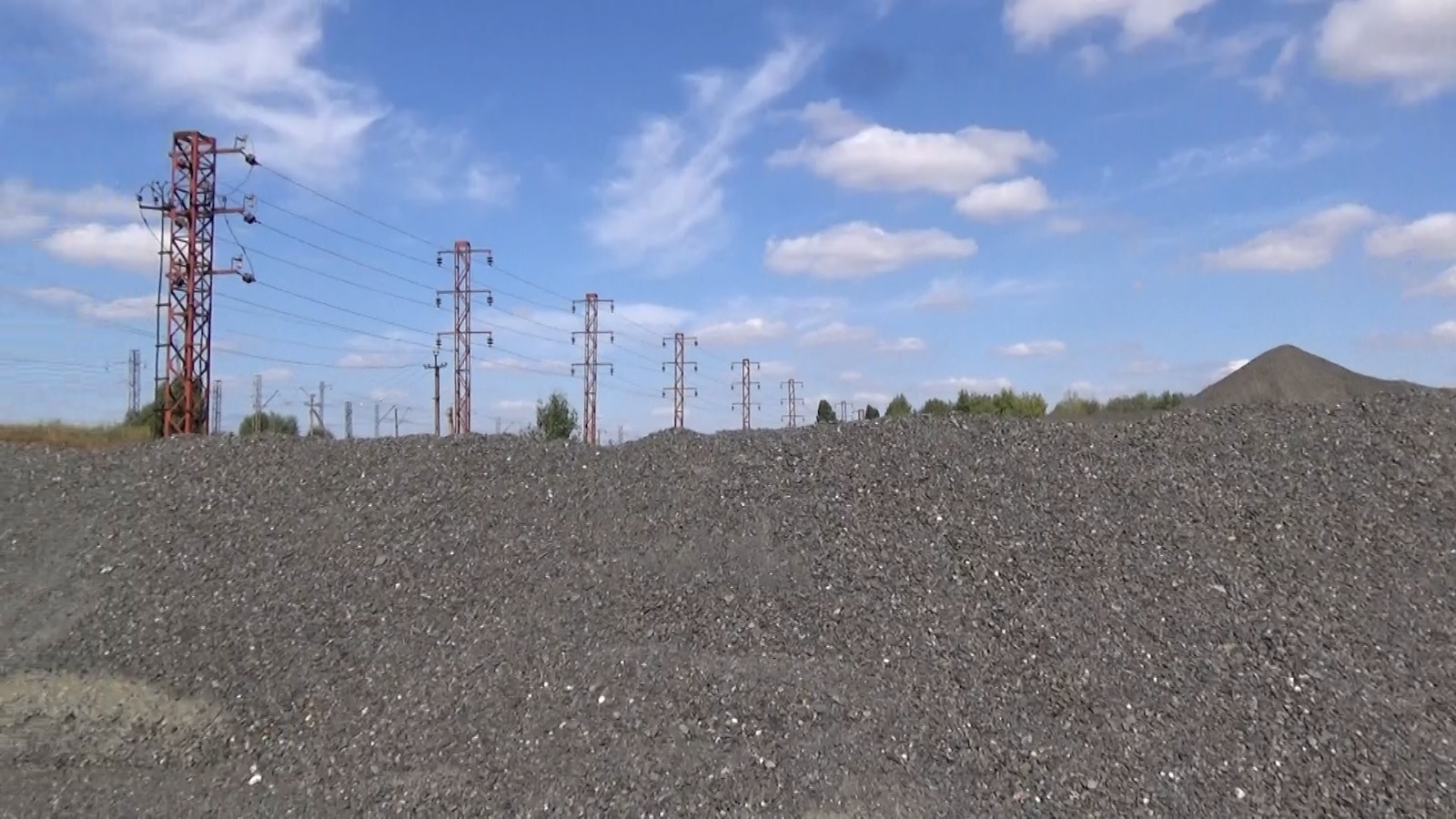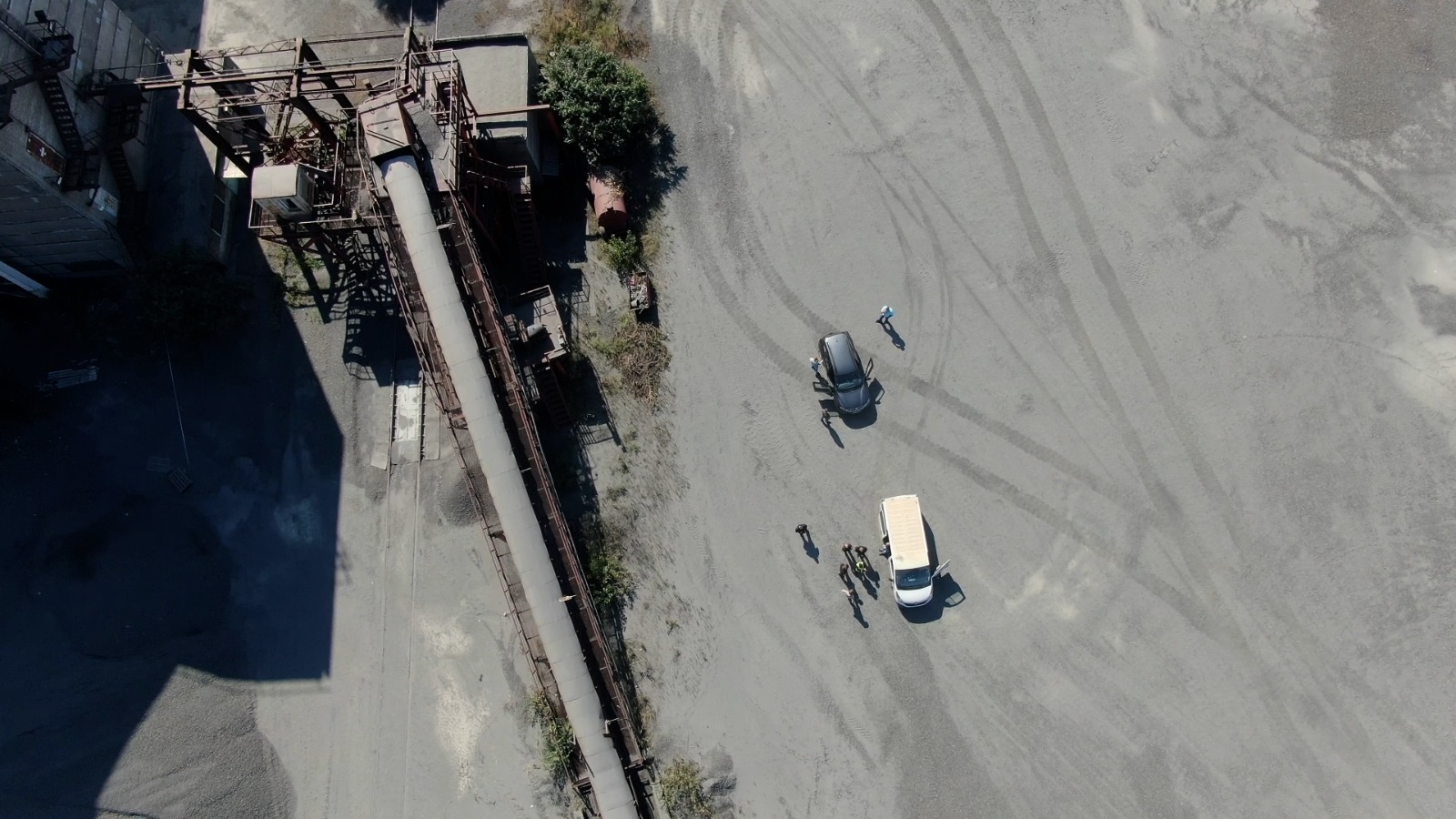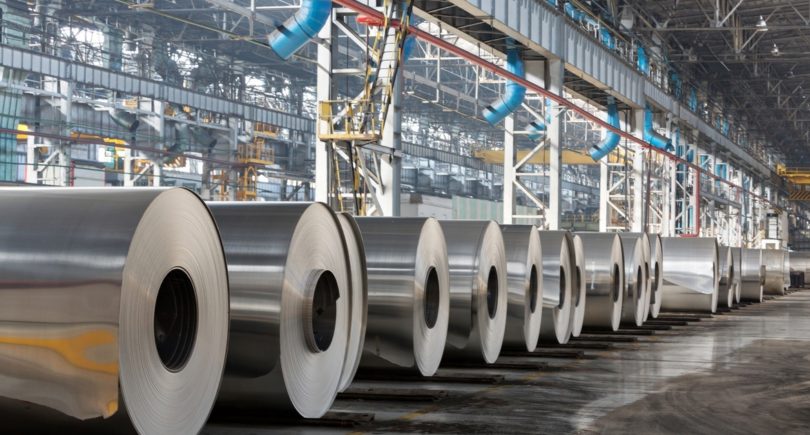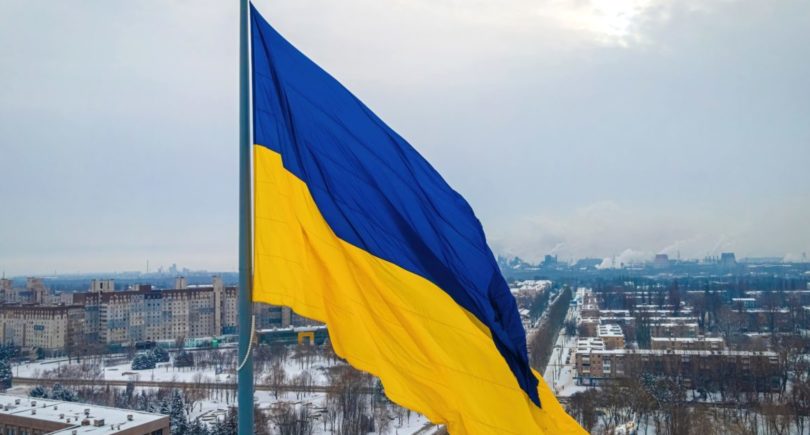
Prosecutor's Office is claiming $4,31 billion in «damages» from alleged illegal mining at Ferrexpo
The Ukrainian government is pursuing a policy that is far from creating an investment-friendly environment in the midst of war, although the opposite is to be expected. Law enforcement agencies have been active in searching for violations in the mining industry. At the same time, the state’s attitude to the subsoil use industry itself is far from ideal. According to a survey conducted by the European Business Association (EBA), only 11% of respondents called the regulatory environment in the field of subsoil use good.
Iron ore case
The case according to which the specialized environmental prosecutor’s office of the Prosecutor General’s Office of Ukraine suspects the chairman of the board of Poltava Mining and Processing Plant, a member of the Ferrexpo group, of allegedly illegal mining and abuse of is one such example. According to the ruling of the Pechersk District Court of September 27, 2023, the head of the company, who, according to the website of the Poltava Mining and Processing Plant, is Viktor Lotous, was imposed a preventive measure in the form of detention with an alternative of bail in the amount of almost UAH 1 billion. This is one of the largest amounts ever in the history of Ukraine.
The charge is that, having a license to extract iron ore, the company allegedly illegally extracted and sold other minerals. In particular, it is about crushed stone of three fractions obtained in the process of iron ore mining – non-fractional screening, rock overburden and waste rock. According to the prosecutor’s office, in 2015-2021, Poltava Mining illegally extracted more than 20 million cubic meters of minerals, and is seeking damages as result for a dubious amount of $4,31 billion. By comparison, Poltava Mining’s total revenue from sales of products, not just production waste, amounted to $620 thousands last year.
Defense position
The official position of the enterprise, which was sent to the GMK Center address, indicates that the enterprise involved the production of iron ore, its processing and enrichment, subject to special permission on the basis of project documentation approved by government authorities.
“Poltava Mining did not extract any other minerals not specified in the special subsoil use permit, and the company’s mining process is carried out in accordance with the approved deposit development project,” says the information.
According to representatives of the press service, the results of processing during the production of iron ore pellets are non-fractional screenings, which are depleted ore, and are in fact not a mineral according to the conclusions of the experts of the National Scientific Center «Institute of Forensic Expertise». Moreover, in their opinion, they say that the process of producing it cannot be classified as mining, and its sale is not prohibited.
The Subsoil Code obliges subsoil users to use mineral resources rationally, which is exactly what Southern Mining did. From the sale of non-fractional screenings, the company paid rent, VAT, and income tax, i.e. all mandatory payments that arose.
The National Police of Ukraine mistakenly believes that the company needs to obtain a separate special permit for the extraction of rock overburden and waste rock, and that their extraction and sale caused losses to the state in excess of $4,31 billion. The company did not sell the rock overburden at all, but stored it in accordance with the project. The National Police is also mistaken in claiming that the extraction of non-fractional screenings also requires a permit.
“It is important to note that dry magnetic separation waste generated as a result of crushing and beneficiation of ferruginous quartzite is not included in the List of Minerals of National and Local Importance approved by the Cabinet of Ministers of Ukraine №827 of December 12, 1994,” Ferrexpo explained.
The company notes that for many years, the sale of non-fractional screening has been subject to inspection by the State Service of Geology and Mineral Resources of Ukraine. After the Service clarified in September 2021 that dry magnetic separation waste obtained from the crushing and beneficiation of ferruginous quartzite is considered mineral raw materials, the Chairman of the Board of Poltava Mining ordered to stop the sale of non-fractional screening.

“Based on the existing mining license, Poltava Mining complies with all the relevant legislation” the company’s report for the first half of 2023 on the London Stock Exchange emphasizes.
In addition, the amount of bail set is surprising. According to the Criminal Procedure Code of Ukraine, the maximum amount of bail is 300 of the minimum income of able-bodied persons or UAH 805.2 thousand according to the budget for 2023. However, in exceptional cases, when the investigating judge or the court determines that the established amount of bail cannot guarantee the performance of duties by a person accused of committing a serious or particularly serious crime, the amount of bail may exceed this limit. It is important to note that exceeding the maximum deposit amount is allowed only in exceptional cases.
Expert opinion
At different stages of iron ore processing, different beneficiation products are formed. Iron ore dressing is used to separate iron-bearing minerals from waste rock.
For example, at the dry magnetic separation (DMS) stage, the first stage of ore dressing, the source rock is separated into two products: magnetic and non-magnetic, or DMS waste. The latter part of the iron ore beneficiation stage produces concentrate and beneficiation waste (tailings). In other words, DMS waste and beneficiation waste (tailings) are considered by-products of iron ore processing. As practice shows, DMS produces 10% of DMS waste from the initial iron ore.
«After crushing and grinding, magnetite quartzite is enriched using magnetic flotation technology with the use of drum magnetic separators with a weak magnetic field and flotation machines. A special feature of Poltava Mining’s ore dressing technology is the sequential concentration of iron-containing useful components (minerals or chemical elements) into a marketable product through the stage-by-stage separation of waste rock from iron ore, which is sent to waste – «tailings». Therefore, dump tailings consist mainly of waste rock; and useful components are contained in them in such an amount or form that they cannot be extracted into a concentrate using the technology adopted. In this case, tailings are a by-product, but not a secondary product. Marketable iron-containing products – concentrate – are obtained only at the end of the technological chain,» says Tetiana Oliynyk, Doctor of Technical Sciences, expert at the State Commission of Ukraine on Mineral Reserves (SCR).
Dr. Oliynyk adds that the sale of dry tailings as a conditioned construction material increases the full utilization of extracted iron ore and helps reduce the area occupied by dumps and tailings.

«However, the dry magnetic separation tailings of Poltava Mining cannot be classified as conditioned construction material because their chemical composition does not meet the requirements of the construction industry – for crushed stone, the sulfur content exceeds the limit values by 10 times, with a limit value of 0,3%, and in the non-magnetic product it reaches 1.0% (which is 2 times higher than the limit value of 0.5%), for gravel – the iron content in the non-magnetic product is 1.3-1.5 times higher than the norm,» says Tetiana Oliynyk.
According to Dr. Oliynyk, the non-magnetic fraction of DMS is no longer a natural accumulation of minerals but a product of iron ore processing. It is classified as waste rock, as it contains useful minerals that cannot be extracted into a marketable product using Poltava Mining’s current beneficiation technology and are not economically viable.
«Minerals are considered to be mineral formations that can be effectively used in material production due to their chemical composition and physical properties. Therefore, any mineral formation can be considered a mineral resource, but only if it can be used effectively. The by-products of ferruginous quartzite enrichment can be considered minerals only if they meet the requirements of the relevant regulatory documents (DSTU) and economic calculations prove the efficiency of their use,» adds Vyacheslav Stetsenko, PhD in Geology, Associate Professor.
The SCR stipulates that products of primary processing (enrichment) of extracted minerals do not belong to mineral raw materials. And a mineral is a part of mineral raw materials that meets the quality limits (conditions as interpreted by the SCR or technical conditions established by state standards). This raises two logical questions. Are primary processing products waste or commodities?
«According to the current legislation, waste is the residual products of enrichment that cannot be utilized in this type of production, but can be used as raw materials for other industries. In other words, non-fractional screening fully complies with this definition. The definition of waste is even more specific in the EU Directives, which Ukraine has undertaken to implement before joining the EU: it is any substance or material object that the owner disposes of as property and undertakes to dispose of in accordance with the applicable law,» emphasizes Tetiana Oliynyk.
According to her, based on the very term «to dispose of as property», waste is a commodity. The Civil Code of Ukraine grants such a right to dispose of waste at the choice of the owner (in our case, the subsoil user) – to bury, sell, recycle or transfer it to another owner. The main thing is that the process does not violate environmental standards and does not harm the environment.
An enterprise has a special permit issued by a government agency to grant subsoil rights to business entities. Subsoil includes all minerals and components within the license area allocated to the subsoil user that are owned by the user. When granting natural resources to an enterprise (in this case), the licensing authority must take into account all risks. For this purpose, a feasibility study is conducted and examined by the SCR. Then the SCR determines which minerals are subject to accounting by putting them on the balance sheet of the enterprise and can bring income in the form of rent to the owner of natural resources – the Ukrainian people.
«The deposit is being developed on the basis of a project that the subsoil user is obliged to develop, undergo expert reviews and approve by government agencies. The project envisages all types of waste generated from the processing of mineral raw materials, including using DMS technology. It also provides for their further management. The legal order in Ukraine obliges the authorities to act exclusively within the limits and in the manner prescribed by law. And the mining company is obliged to take all measures to ensure environmental safety and reduce the negative impact on the environment and, as a result, public health. The state environmental impact assessment (EIA) and then the conclusion of the environmental impact assessment (EIA) oblige the mining company to reduce the amount of waste and, as a result, to reduce the amount of mining waste disposed of in the environment,» explains Vyacheslav Stetsenko.
For the use of subsoil, a mining company that holds a license to extract ferruginous quartzite pays rent to the state budget. By purchasing a special permit for subsoil use from the state, the company acquires the right to dispose of natural resources within the license area. If the licensing authority has not included any restrictions on the use of waste resulting from the processing of mineral raw materials in the special permit, as was the case, for example, for Kryvyi Rih enterprises to store oxidized ores, which are the raw material base of Kryvyi Rih Mining and Processing Plant of oxidized ores, then it can dispose of by-products of ferruginous quartzite mining.
«Based on this, the company can dispose of iron ore by-products within the legal framework and must fulfill its obligations to reduce the accumulation of mining waste,» emphasizes Vyacheslav Stetsenko.
According to Tetyana Oliynyk, Ukraine needs to implement the recommendations of the relevant EU directives on industrial waste management as the first step in creating a system for processing, recycling and disposal of the waste generated to use it as secondary resources. In other words, at the state level, it is necessary to clearly separate the issues of subsoil use of primary mineral resources extracted from the subsoil from the environmental issues of secondary resources (waste, screenings, sludge, overburden dumps, etc.).
Discussion around an enormous amount of «budget losses»
Indeed, according to the press service of Poltava Mining, given that the state’s losses may be in the form of unpaid tax payments, the logic of the National Police investigators is that the company should have sold all production waste at an effective price of more than UAH 29,000 per ton (US$783 per ton). According to the Ministry of Economy of Ukraine, the actual selling price of iron ore, the main product of Poltava Mining, for the first quarter of 2023 is UAH 4,600 per ton (US$124 per ton). This means the experts mistakenly value the waste at approximately six iron ore prices. This is nonsensical; how can the waste be worth much more than the iron ore?
As we can see, law enforcement investigators made significant mistakes in their calculations during the conduct of this court case. Perhaps they will revise their approaches and numbers with a less biased attitude towards her.
Large-scale campaign against Ferrexpo continues
The National Police case is only one episode of a large-scale campaign against Poltava Mining and other Ferrexpo Group companies involving central executive authorities, as well as judicial and law enforcement agencies.
For example, in June 2023, the State Bureau of Investigation (SBI) also charged the management of Poltava Mining with illegal sale of production waste. The SBI investigators argued that non-fractional screenings are minerals, and Poltava Mining does not have a permit from the State Service of Geology and Mineral Resources of Ukraine. The SBI’s charges relate to business transactions for three incomplete years – from January 1, 2019, to September 30, 2021 (totaling $2,22 million). At the same time, the National Police investigators are conducting a case regarding the company’s business operations for the period from 2015 to 2021, having calculated losses to the state in the amount of $4,31 billion – almost 2000 times more than the total amount of non-factional screenings sold in the SBI case.

npu.gov.ua
And in early 2023, the company was accused of underpaying rent payments for the use of subsoil in the amount of more than $60 million. The case has been under pre-trial investigation for almost a year and has not yielded any results.
Attractive subsoil
In conclusion, even during the active phase of hostilities, extractive companies continue to invest in business. According to a survey by the European Business Association, 74% of subsoil users continue to invest in business during the war. Only 8% of the surveyed companies have stopped financing development. Ferrexpo, invested $58 million in its assets in January-June this year, while the investments of the majority of subsoil users (61%) do not exceed $5 million.
At the same time, 82% of respondents consider the subsoil use sector to be attractive for investment, and the resource potential of Ukraine is estimated at 7.85 points on a 10-point scale.
The business believes that a high-quality regulatory environment, protection of property rights, and foreign investment could stimulate the development of the subsoil use sector. In other words, improving the state’s attitude to the industry and reducing the level of control would benefit both the country and business.
In the summer, the President’s Office planned to develop a concept of concentrating business control functions in one government agency instead of many as it is now. However, such a concept has not yet been officially presented, meaning that businesses will still have to endure numerous inspections by various “controllers” that basically prevent them from developing.
At the moment, the chairman of the company’s board is detained and is awaiting an appeal. Will the state adopt the relevant changes? Only time will tell.




